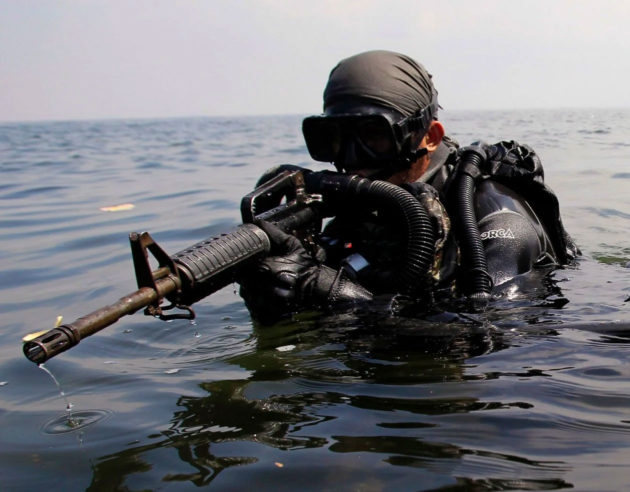Facing a modern sea-based threat in China and also having suffered from multiple sexual assault or drug scandals, the SEALs are in need of an overhaul.
his week the United States navy announced that its elite SEAL (Sea, Air, and LAND) teams would undergo a major transition in an effort to improve leadership while expanding their commando capabilities, so as to better address threats from near peer adversaries including China and Russia.
Officially founded in 1962, the modern-day U.S. Navy SEALs can trace their roots to the Second World War, when there was a need for covert reconnaissance of landing beaches and enemy coastal defenses. The joint Army, Marine Corps and Navy Amphibious Scout and Raider School was established in 1942 at Fort Pierce, Florida with the first Amphibious Scout and Raider units formed that year.
Its main function has been in conducting small-unit special operation missions in a variety of environments including maritime, jungle, urban, arctic, mountainous, and even desert terrain. SEALs have been tasked with a variety of missions, including operations to capture or to eliminate high level targets, hostage rescue operations and intelligence gathering behind enemy lines.
Today’s SEALs are expertly trained to perform highly specialized, intensely challenging warfare capabilities that go beyond the means of standard military forces. The mission of the SEALs has included direct action warfare, special reconnaissance, counterterrorism, and foreign internal defense.
For many years the activities of the SEALs was largely shrouded in obscurity, the U.S. Navy SEALs—along with their companion Special Warfare Combatant-Craft Crewmen (SWCC)—have become a ubiquitous component in the on-going war against terrorism around the globe.
Under the new plan, the number of SEAL platoons could be cut by as much as thirty percent, while increasing the size of the teams to make them more lethal and better able to counter sophisticated maritime and undersea adversaries. The Navy also announced that there will be a new and intensive screening process so as to obtain higher-quality leaders. This was meant to address recent scandals that have included murder, sexual assault and drug use among some members of the elite unit.
Rear Adm. H. Wyman Howard III, the top commander of the Navy’s SEALs, told The Associated Press that the unit will shift beyond its recent focus on counterterrorism. For the past two decades, the SEALs have been engaged in operations in the deserts of Iraq and the mountains of Afghanistan, but soon the force could be going back to the sea.
The counterterrorism fight has allowed the elite warfighters to better sharpen and hone their skills, notably areas such as developing an intelligence network and finding and hitting targets. Now the unit is being reshaped to address peer threats. The larger size of the platoons will allow the units to add high-tech capabilities that include a variety of capabilities in cyber and electronic warfare, as well as in the use of unmanned systems. All of this is to better collect intelligence and then deceive and defeat an adversary.
The Navy is also working to address some of the past scandals, and that will include improved screening process to ensure it selects the best individuals—not only for their physical abilities but also in their character. This will ensure that the SEALs remain among the best elite fighters in the world.
Peter Suciu is a Michigan-based writer who has contributed to more than four dozen magazines, newspapers and websites. He regularly writes about military small arms, and is the author of several books on military headgear including A Gallery of Military Headdress, which is available on Amazon.com.
https://nationalinterest.org/blog/buzz/how-navy-seals-are-evolving-meet-challenges-21st-century-184006


Leave a Reply
You must be logged in to post a comment.